We truly hope that you will greatly enjoy reading this article about 3 Magnificent Alaskan Mammals as much as we enjoyed compiling it for you. It’s also our fervent hope that you will come away from it with a new or renewed appreciation of these natural wonders.
Obviously, these few species represent only the barest handful of the incredible species found in this region of the world. Indeed, they’re but a small percentage of even the amazing mammals, let alone of all types of life. But we feel they’re a good representative sample.
Alaskan Timber Wolf
Alaskan Timber Wolf Facts
- Leading off this article about 3 Magnificent Alaskan Mammals comes the regal canine bearing the descriptive name of the Alaskan Timber Wolf.
- This majestic wild canine most frequently goes by the reasonably descriptive and informative common name for compeltely justifiable reasons. It also has several other, alternate common names. The variants typically occur across various parts of its range.
- These include such terms as Nothwestern wolf, Mackenzie valley wolf, Rocky Mountain Wolf, and Canadian Timber Wolf. Professional researchers, however, tend to use the scientific name for it. That’s the hard to pronounce term Canis lupus occidentalis.
- It earned that name at the hands of the Scottish explorer and naturalist, Sir John Richardson. He made fthe first official recognition of it as a separate and distinct species. This scientifically noteworthy deed he accomplished in the year 1829.
- Technically, this product of evolution qualifies as a subspecies of the well-known Gray Wolf (Canis lupus). Regardless of which term one chooses to employ when discussing it, though, this work of Nature stands out from the pack, so to speak.
- Fortunately, it appears to be maintaining a population base that’s both sizeable and stable. This trend further seems to hold true throughout the entirety of its natural range. The IUCN, therefore, presently has no liting for it on the organization’s Red List.
- The Alaskan Timber Wolf nevertheless does face several potential threats to its continued existence, like many species. Habitat loss obviously poses a danger, given human expansion. Its greatest danger, however, likely comes from climate change.
Alaskan Timber Wolf Physical Description
Although size isn’t the only impressive attribute of the Alaskan Timber Wolf, by any means, it’s nonetheless among them. In point of fact, this marvelous work of Nature actually ranks as one of the largest of all known subspecies of the better known Gray Wolf.
Like many mammals in the world, it also displays a moderate degree of the physiological trait of sexual dimorphism. In its specific case, this trait manifests itself in terms of pure physical size. That’s because males typically grow slightly larger.
Its sheer size also tends to vary across its range. Overall, however, certain patterns predominate. Males typically range in weight from 124 – 159 lb (56.25 – 72.1 kg). Females, meanwhile, average roughly 94 – 132 lb (42.6 – 59.9 kg) across the same range.
Both genders, though, despite the differences in weight, achieve roughly the same average height at the shoulder. This ranges from about 26.8 – 36 in (68 – 91.4 cm). This, therefore, means that the males generally possess a stockier build than the females.
In terms of appearance, the two genders achieve the same overall color pattern. That, though, varies widely among individuals, regardless of gender. Individuals of the awesome Alaskan Timber Wolf all usually manifest long bushy tails, usually with a black tip.
The rest of the bodies, however, display widely varied patterns of colors. This generally consists of mixtures of various shades of gray and brown. Each also commonly displays light brownish-yellow markings appearing on both the faces and the undersides.
Variations in this natural pattern of colors nevertheless do occur. When these do, they usually manifest in truly striking visual displays. These exceptional specimens sometimes display such remarkable patterns as either pure white, brown, or even pure black.
- Kingdom: Animalia
- Phylum: Chordata
- Class: Mammalia
- Order: Carnivora
- Order: Canidae
- Genus: C. lupus
- Species: C. l. occidentalis
Alaskan Timber Wolf Distribution, Habitat, and Ecology
Forunately, the majestic Alaskan Timber Wolf inhabits a moderately broad swathe of the globe. That native range covers a respectabale portion of the continent of North America. This actually gives it a more extensive range than the majority of its relatives.
As its most frequently used common name implies, furthermore, part of that range includes the state of Alaska, in the United States. But that’s only the beginning. That’s due to the surprising fact that, from there, that zone of habitation extends much further south.
That natural range runs through much of the western provinces of Canada. The exception, though, is the prairie landscapes of the country. From there, however, the canine makes appearance across much of the northwestern portions of the continental United States.
Within that range, though, it displays an extraordinary adaptibility in its choice of habitats. That’s because it appears in such diverse regions as forests, tundra, prairie, grasslands, deserts, mountains, and grasslands. It even often appears in subarctic forest regions!
Like its many relatives around the world, the stunning Alaskan Timber Wolf evolved purely as a carnivore. It’s generally an active hunter, yet it does occasionally feed as an ambush predator. It also has a wide ranging diet, including various creatures both large and small.
Its smaller prey frequently includes ground squirrels, beavers, salmon, hare, voles, and lemmings. Yet it doesn’t hesitate to hunt prey roughly its own size, or even larger than itself. This even includes such prey as deer, mountain goats, sheep, moose, and even bison!
Reindeer
Reindeer Facts
- Appearing third in this compendium of 3 Magnificent Alaskan Mammals, though only due to random selection, comes the amazing Reindeer.
- Perhaps most notably, the common name for this creature applies to a specific variety of deer with a total of 15 subspecies. All of these live as native to specific, and rather harsh, sections of the world. In some ways, this aids in their survival, however.
- The same awesome animal also goes by the name of caribou in parts of its native range, though. Regardless of the name one uses for the impressive creature, however, Indigenous Peoples in parts of its range depend on it for their very survival.
- In addition to the simple facts of its great beauty, one very special fact sets this remarkable creature apart from all other known animals. This characteristic actually formed as a unique adaptation to the climate in which the species evolved.
- Quite amazingly, the beautiful reindeer remains the only known mammal to possess the ability to see in ultraviolet light. Though still numerous, the population of this amazingly adapted mammal unfortunately appears to be in decline.
- The main reason for this seems to be climate change, much like many species around the world today. However, several other factors also threaten the magnificent animal. These include two separate parasites that threaten several local populations.
Reindeer Physical Description
The remarkable Reindeer holds more surprises, in this case in terms of its appearance. That’s because the color of the fur of the mammal varies widely, both in individuals and with the season. This represents yet another uncommon trait that the creature displays.
In point of fact, the coloring generally ranges from off-white to a dark brown. The fur further sometimes develops a most striking mottled pattern. In other aspects of its physiology, though, it displays many of the same traits that characterize many types of animals.
That’s due to the fact that it displays a mild degree of sexual dimorphism. That’s because, in its case, contrary to popularly held belief, both sexes develop antlers. This also sets it apart from related species, because it’s the only species whose females grow antlers.
Those of the mature female, however, generally develop as much smaller than those of the males. Yet overall, the antlers of this beautiful ruminant average up to 39 in (100 cm) in length. These features also attain an impressive average of 53 in (135 cm) in total width.
Mature male Reindeer grow larger than the females and average roughly 7 ft (2.13 m) in length, and weigh an average of 400 lb (182 kg). A few rare males attain a weight of up to 700 lb (318 kg). Typically, an adult also stands about 59 in (150 cm) tall at the shoulder.
- Kingdom: Animalia
- Phylum: Chordata
- Class: Mammalia
- Order: Artiodactyla
- Family: Cervidae
- Genus: Rangifer
- Species: R. tarandus
Reindeer Distribution, Habitat, and Ecology
The powerful and majestic Reindeer actually evolved as native to a most surprising part of the world. More precisely, the ruminant remains native to the Arctic and subarctic regions of the world. The impressive animal also migrates within its region of habitation.
This includes much of the tundra regions of the Northern Hemisphere. This range once extended much further south than it does today. Its range also naturally affects its diet. Being a large ruminant, the Reindeer primarily feeds upon a wide variety of local native plants.
These, however, most commonly include such plants as reindeer moss, grasses, sedges. Individuals also consume the leaves of willows and birches. It also feeds on lichen, as well. This further makes it the only known large mammal able to consume lichen.
Despite its relatively large size, it in turn falls prey to a number of predators. These vary, depending upon the region of the world it inhabits. Animals such as golden eagles and wolverines prey on the young. Only polar bears and brown bears feed on mature individuals.
Steller Sea Lion
Steller Sea Lion Facts
- The last, but certainly not least, animal appearing on this list of 3 Magnificent Alaskan Mammals is the impressive creatue named the Steller Sea Lion.
- The term for this pinniped, not at all surprisingly, serves as one of the common names of a particularly impressive variety of mammal. This incredible wonder of evolution also goes by the alternate common name of the northern sea lion, though.
- Its scientific name remains that of the extremely difficult to pronounce term of the Eumetopias jubatus. Regardless of which name one chooses to use to refer to it, however, this animal ranks as the largest of all forms of eared seals.
- In point of fact, among the group known to researchers as pinnipeds, it ranks very near the top in terms of sheer physical seize. That’s true since only the walrus and 2 species of elephant seals grow to a larger size than this amazing animal.
- The species bears the common name that it does in honor of the first person to officially recognize the species. That was the well respected German botanist and zoologist, Georg Wilhelm Steller. This fortuitous description occurred in the year 1741.
- Quite sadly, and for reasons that remain undetermined, its numbers have decreased substantially in the past 30 years. This fact, most unfortunately, holds true throughout most of its range. Ongoing research continues to seek a reason, though.
- Numerous, though sadly, not all, countries have therefore banned the slaughter of these impressive marine creatures. Due to these facts, the IUCN currently lists this magnificent ocean creature as Near Threatened.
- The magnificent Steller Sea Lion thankfully now has protection via the Marine Mammal Protection Act in the United States, however. Fortunately for the fascinating species, that country controls the largest portion of its endemic range.
Steller Sea Lion Physical Description
Like many related species, the Steller Sea Lion displays a pronounced degree of sexual dimorphism. Females grow until the fifth year, while the larger males grow until the eighth year. Males also typically grown slightly longer and heavier than females.
The males have a much broader and stockier build than that of the shorter females. Males also average roughly 10.7 ft (3.3 m) in length and weigh as much as 2,470 lb (1,120 kg). Females attain an average length of 9.5 ft (2.9 m), and a weight of up to 770 lb (350 kg).
Both genders of the Steller Sea Lion typically show a tawny or reddish color as adults. By contrast, the pups appear almost black. Adult males also tend to have a dark tuft of hair around the neck, consequently giving them the appearance of having a small mane of hair.
- Kingdom: Animalia
- Phylum: Chordata
- Class: Mammalia
- Order: Carnivora
- Family: Otariidae
- Genus: Eumetpoias
- Species: E. jubatus
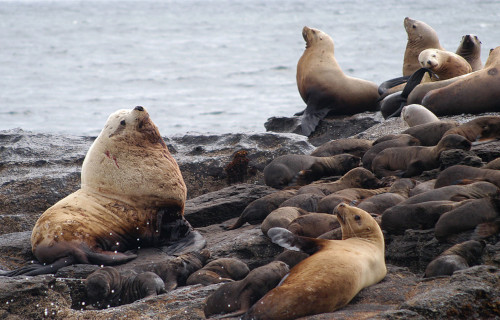
Photo: Oregon Department of Fish & Wildlife
CCL: https://bit.ly/3fVZDVt
Steller Sea Lion Distribution, Habitat, and Ecology
The magnificent Steller Sea Lion inhabits a moderately large portion of the globe. This remains the case, at least, when its range is compared to related species. That holds true partly due to the fact that it inhabits a decidedly northern territory range.
More precisely, though, this awesome wonder of Nature inhabits an area that begins in the vicinity of the Sea of Okhotsk. This territory then roughly extends to an island off the coast of northern California, in the United States, in North America.
These extremely powerful predators most commonly live in areas consisting of various coastal waters throughout their range. The impressive mammals also typically congregate in relatively large groups for mating and rearing the young
This same process also usually takes place on the beaches of various remote islands. This tends to provide with a relative degree of safety. A single birth remains most common. Nevertheless, multiple births do happen occasionally as well.
As a very highly skilled marine predator, the Steller Sea Lion quite actively and aggressively hunts its prey. Individuals also generally feed on a wide range of prey. Yet, this does most typically consist of numerous mid-sized cephalopod and fish species.
Sometimes, however, individuals of this powerful predator prey on small species of seals. Understandably, its own natural predators remain few, given its size. But, it does occasionally fall victim to certain larger types of shark, as well as the Orca.
3 Magnificent Alaskan Mammals
We hope that you have thoroughly enjoyed this article we have presented to you, about these 3 Magnificent Alaskan Mammals. It was certainly our pleasure to bring it to you, our readers. Hopefully, reading it engendered in you a fuller appreciation and respect for them.
Lamentably, however, many of their relatives, along with countless other species throughout the world, now find themselves in dire peril. It’s up to each and every one of us to do all that we can to protect and preserve these species, and others, for the sake of us all.
Check out our other articles on 3 Fabulous North American Felines, Earth’s Many Magnificent Bees , 6 Laudably Luscious Lilies, Magnificent Mammals of Australia

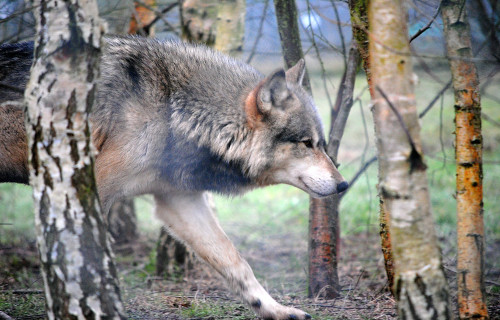
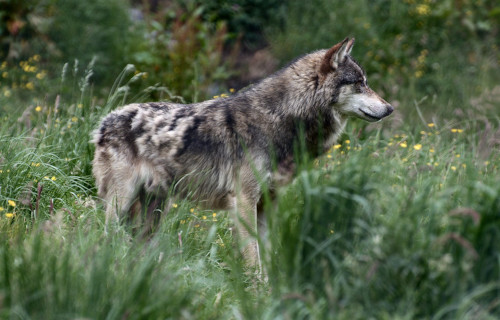
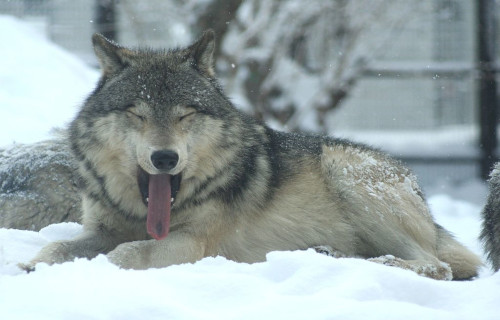
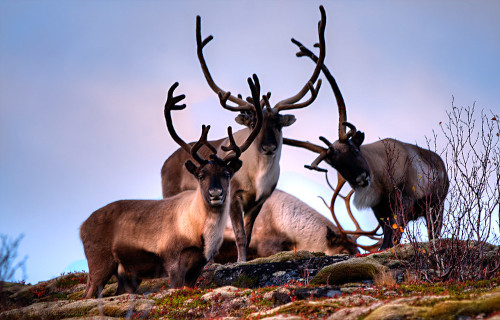
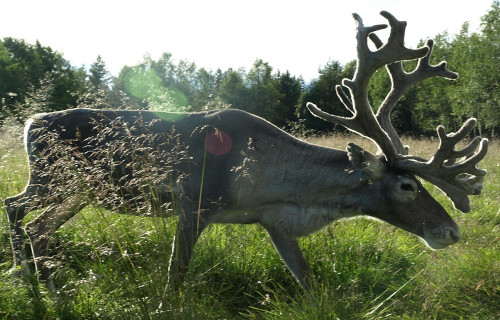
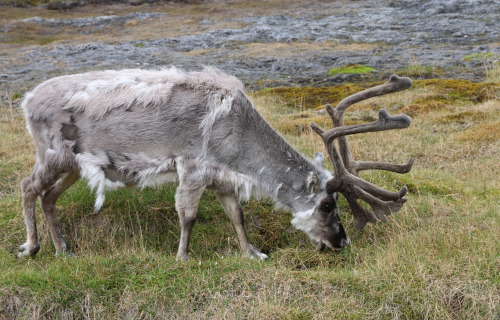
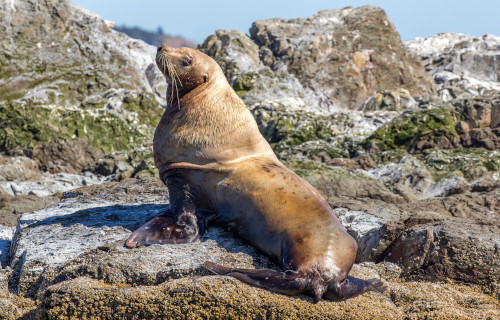
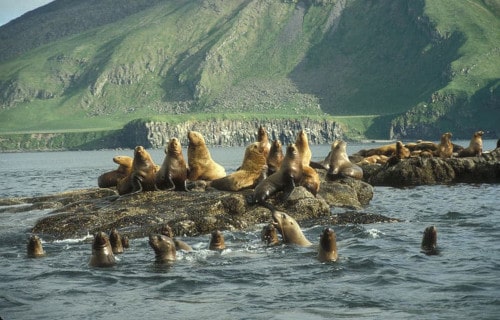









Leave a Reply